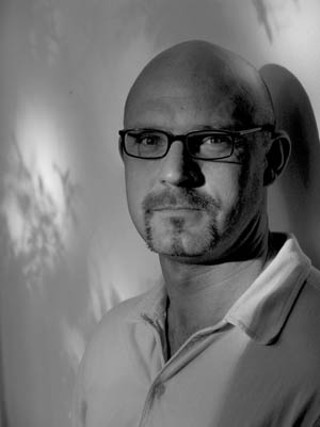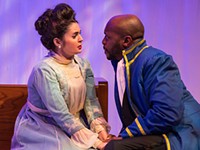Greg Bolin: Non-Austin Austin Composer
The score on rescoring Porgy and Bess
By Graham Reynolds, Fri., Jan. 25, 2008

In November, Greg Bolin was hired to do an unenviable task: reassess, edit, and rewrite a masterpiece, Porgy and Bess. And not only did Bolin have to work with George Gershwin's intimidating score; he also had to work with the signature reinterpretations of it by some of America's best known and highly skilled musical artists: Louis Armstrong and Ella Fitzgerald, Cleo Laine and Ray Charles, and Nina Simone, among others. To take all those artistic voices and visions and put them together into one work that retained the best of each while creating a cohesive larger whole is, at the least, a challenge. The end result would need to serve and support the narrative; rather than simply be a revue that skips around the decades and styles, Bolin's version had to capture a singular place and time.
The Zachary Scott Theatre Center found the right person for the job, as there is probably no composer in Austin better prepared for this particular assignment. Bolin's doctoral thesis was in opera, he has an interest in musicals, and while possessing a personal style in his composition, he is also accustomed to the submission of ego and relative invisibility of the job of orchestration. Bolin knew right away that this wasn't a bullhorn for his personal signatures, that his voice would be subtle in the final product. He also understood that while Ray Charles' version of "Summertime" could be influential, the audience couldn't immediately recognize it as such. They needed to accept Porgy as Porgy, not as an iconic pop star. "The biggest thing that's tricky is, yes, we want to do this piece that takes these numbers and gives them a contemporary jazz or R&B or gospel [style]," Bolin notes. "That's terrific as long as you also keep an eye on how those things work into the piece dramatically." The reinterpretations did not have to tell a story; Bolin does.
Opera and musicals are not the same thing, and one does not easily become the other. Bolin asks the obvious first question: "How do you make an opera into a musical theatre piece like this? Because opera happens in slow motion – that's why it's 3½ hours long. If you read those lines between the songs, there would be something like 45 seconds of lines, then another song. When they're sung, that's six or seven minutes of music. That's why the opera is so huge."
"What I've basically done," Bolin explains, "is gone through and taken a look at the opera itself, a 3½-hour opera that's solid music, and it's difficult; it's seamless. It's hard to say, 'Well, this is a number.' It's a lot more integrated that way, so I just started by taking the score and sort of dissecting it into what I thought was recitative and what I thought was a number. Then I just spent a good while making sure I understood where each song was falling in the dramatic context of the piece."
Bolin is a native of Montana, and much of his national network of connections stems from his roots there. His pieces have been performed from Buenos Aires to Japan, Chicago to Missoula, and now, with his resetting of Porgy and Bess, Austin. Bolin landed in Austin to pursue his doctorate in composition, which he completed last year. Asked to describe his music – always a challenging question at best – Bolin offers: "I guess at its core, it's contemporary concert music, but that's probably a little misleading, because it's all informed by my other musical interests, including theatre and jazz. If Debussy and John Adams had a love child named Stephen Sondheim?" So, French impressionism, American minimalism, and the most sophisticated of recent Broadway composers. Clips of his pieces can be heard at www.gregbolin.com. Listen and welcome a new compositional voice to the Austin scene. You'll find that his description is not far off at all.










